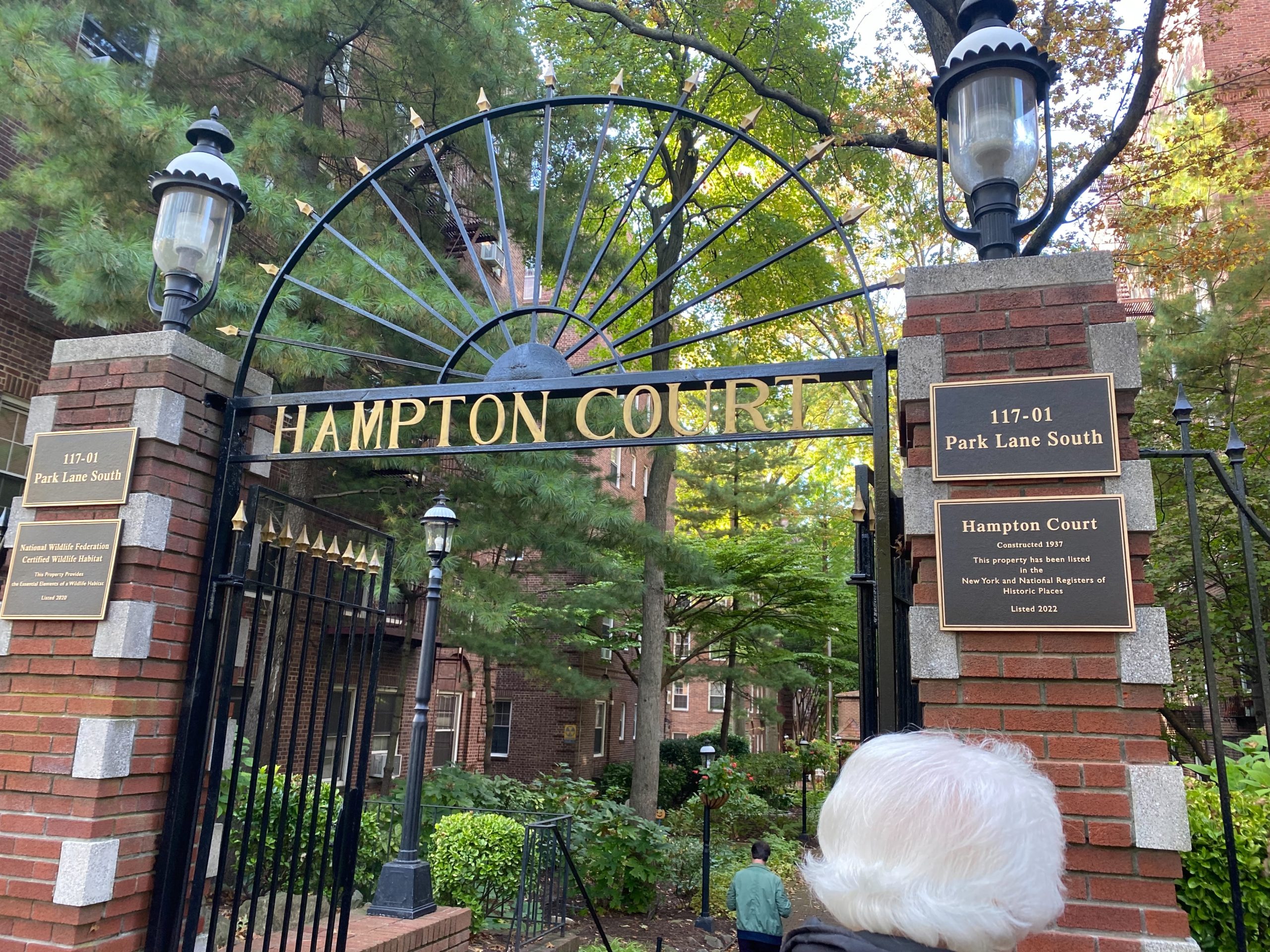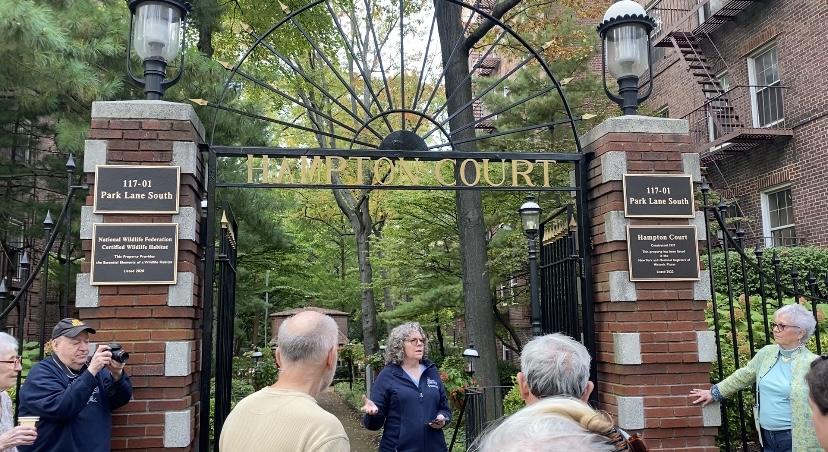By Jessica DeFreitas
news@queensledger.com

Hampton Court invited the community to bask in celebration of its recent milestones over the weekend.
The four-building assemblage, located at 11701 Park Lane South, has been placed on the State and National Register of Historic Places and was recognized by the National Wildlife Federation as a Certified Wildlife Habitat.
On Saturday, residents of Hampton Court gathered to unveil the plaques commemorating these achievements followed by a presentation of the community’s history.
The courtyard, located on Metropolitan Avenue and Park Lane South, is a garden escape within the city.
Formerly known as Kent Manor, the scenic Kew Gardens co-op community is permeated with greenery and flora throughout the entire compound.
Hampton Court, which was built in 1937, housed many German-Jewish immigrants who took refuge fleeing the Holocaust.
Andrea Crawford, president of the Board of Directors for Hampton Court, is proud of the history the community was built on.
She shared how Kew Gardens was developed after its neighboring community, Richmond Hill.
“The name Kew Gardens came from the fact that all of the buildings had windows which faced gardens,” Crawford said.
She also recalled one of the first residents to ever live there.
“Maryann came here in 1937 with her parents, grew up, got her own apartment, got married, raised her own family and died here,” Crawford said.

Andrea Crawford unveiling the plaques to commemorate the occasion.
Crawford added that 50 percent of Hampton Court’s first residents were refugees.
The Georgian Colonial-style buildings, designed by Constantinople native Benjamin Braunstein, were different from neighboring buildings, which were built with a Victorian style.
Like many of the residents who lived at Hampton Court, he too achieved the American Dream.
Hampton Court changed its name from Kent Manor when the building management converted from apartment rentals to co-op ownership.
“Hampton Court was grander and more British,” Crawford explained, “But there were many issues because the compound was carved out of the park.”
Throughout the 1910s and 1920s, the city of New York wanted the community to be a part of Forest Park instead of creating housing.
Residents formed the Kew Gardens Civic Corporation battling legal issues. The city even proposed the land be used for a school instead.
The landowners proposed that residents pay $600 each for them to agree to start building, but the community came together and refused.
The uprising of residents helped the building of Kent Manor to commence without additional fees to their rent.
Braunstein’s vision for designing the building’s architecture was to pave the way for immigrants to feel “Americanized,” creating a revival for colonial architecture.
Hampton Court’s wildlife habitat is one of the few of its kind in Queens.
Its plants are purposely placed to attract pollinators, making the compound a glorious sighting for butterflies and rare birds during spring and summer.
Crawford was happy to mention that the buildings replaced gas with electrical units as a way to sustain clean air and the environment.
Santiago Preciado, a historian who gave a presentation at the event, spoke of Hampton Court’s controversial history with land rights.
“Everyone rose up against [paying $600], and essentially, that’s how this became developed in the first place. The property owners held out from 1910 until 1935 when the building started,” he said. “I think that’s really interesting.”


